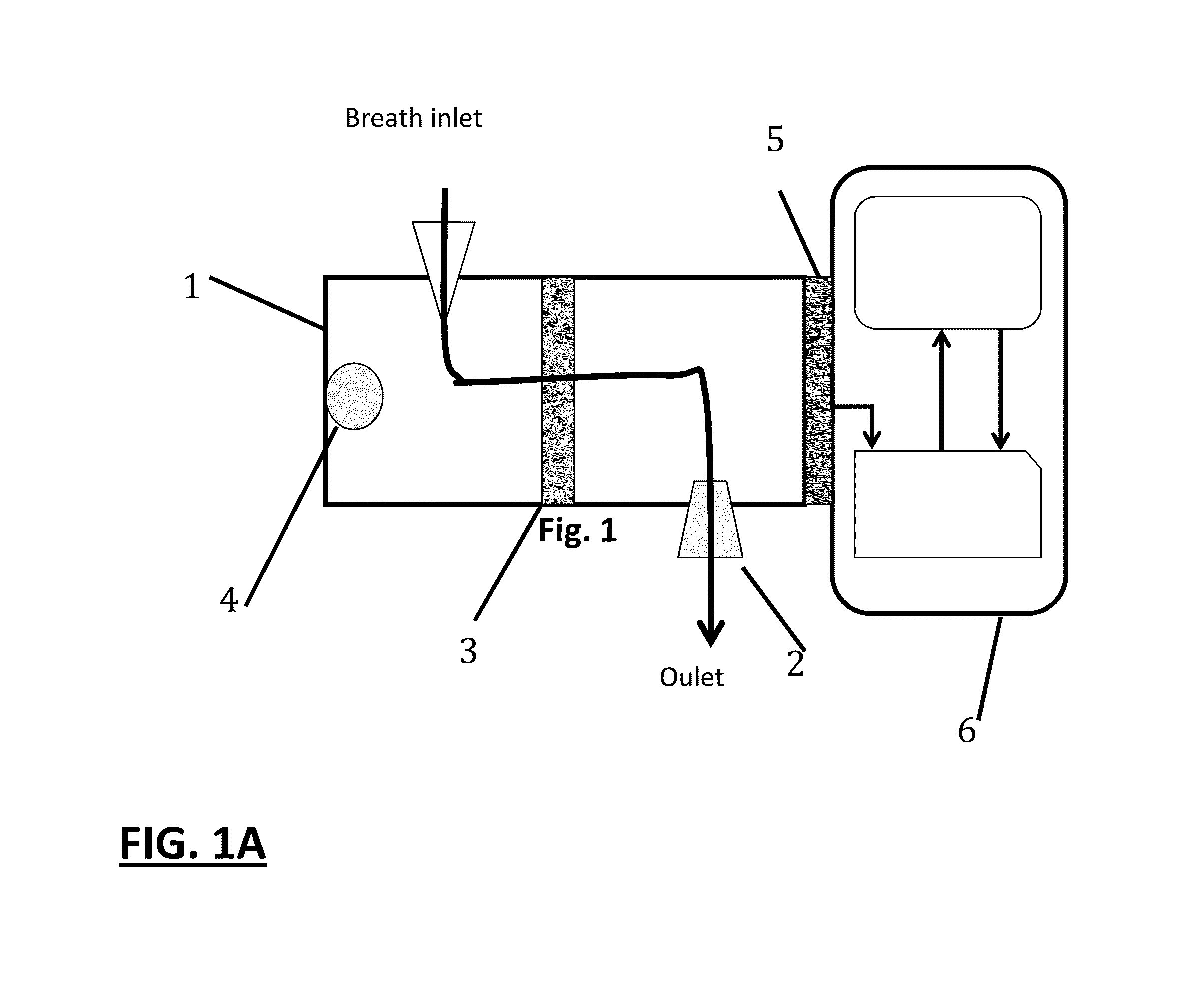Metabolic analyzer
a technology of metabolic analyzer and analyzer, which is applied in the field of metabolic analyzer, can solve the problems of inability to combine the different detection principles in a single integrated device, the cost of the analyzer is high, and the lifetime of the electrochemical detection is difficult to meet the needs of use,
- Summary
- Abstract
- Description
- Claims
- Application Information
AI Technical Summary
Benefits of technology
Problems solved by technology
Method used
Image
Examples
example embodiments
[0065]Referring now to FIG. 1A, an example of a metabolic analyzer is schematically shown. It contains several components: 1) an integrated collection-detection sensor with high efficiency for collection and detection of metabolic signatures via a porous membrane with high density of sensing binding sites, which provides optimal sensitivity, 2) integration of the collection-detection sensors (porous membrane sensor) with solid-state optical detection, which features low cost and robust device, 3) sensing materials with specific and reactive binding sites that not only support high sensitivity but also high specificity for correct detection of breath analytes.
[0066]Referring now to FIG. 1B, another example of a metabolic analyzer is schematically shown. It contains several components: 1) an integrated collection-detection sensor with high efficiency for collection and detection of metabolic signatures via a solid support coated with high density of sensing binding sites, which provid...
PUM
 Login to View More
Login to View More Abstract
Description
Claims
Application Information
 Login to View More
Login to View More - R&D
- Intellectual Property
- Life Sciences
- Materials
- Tech Scout
- Unparalleled Data Quality
- Higher Quality Content
- 60% Fewer Hallucinations
Browse by: Latest US Patents, China's latest patents, Technical Efficacy Thesaurus, Application Domain, Technology Topic, Popular Technical Reports.
© 2025 PatSnap. All rights reserved.Legal|Privacy policy|Modern Slavery Act Transparency Statement|Sitemap|About US| Contact US: help@patsnap.com



